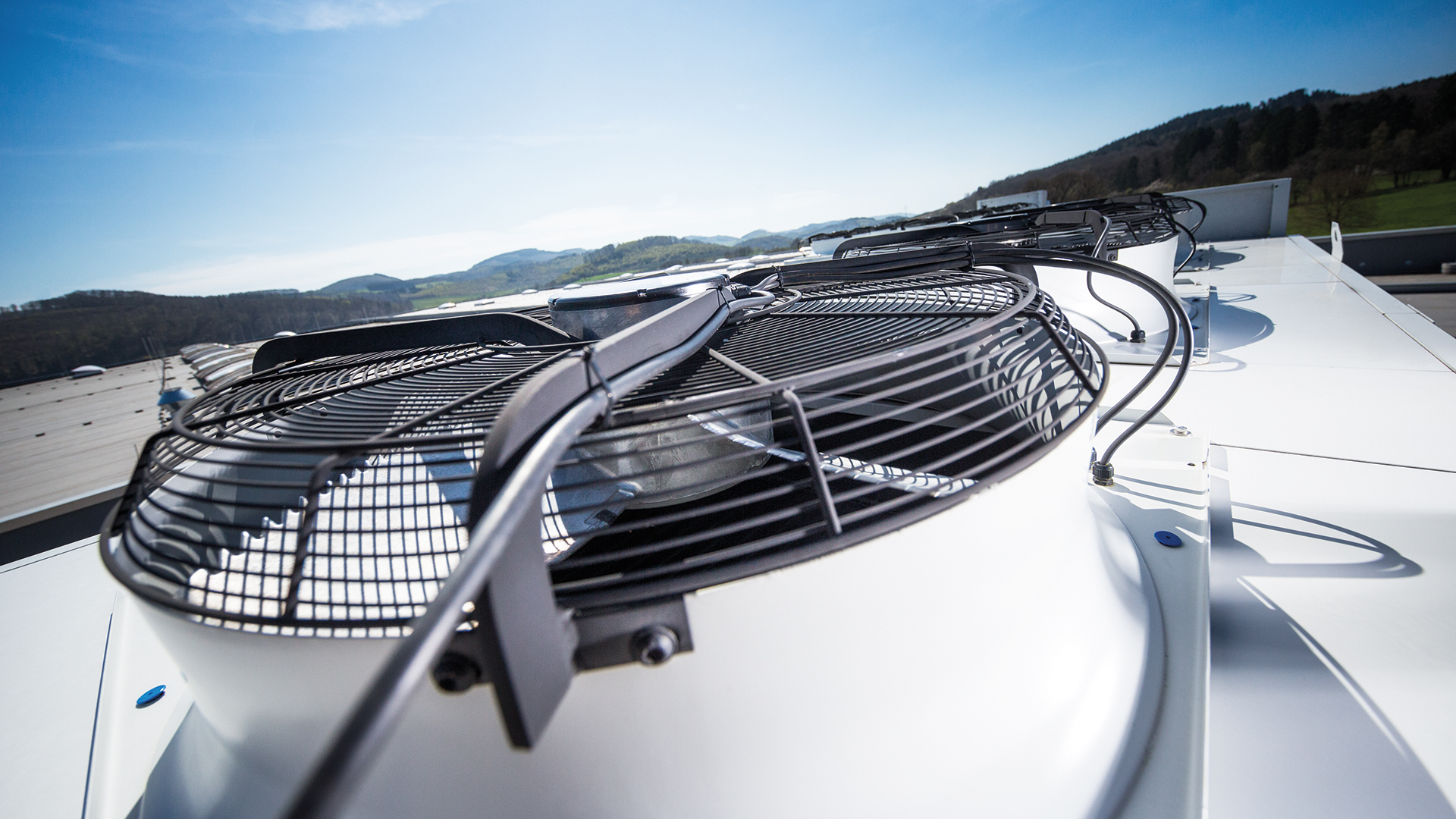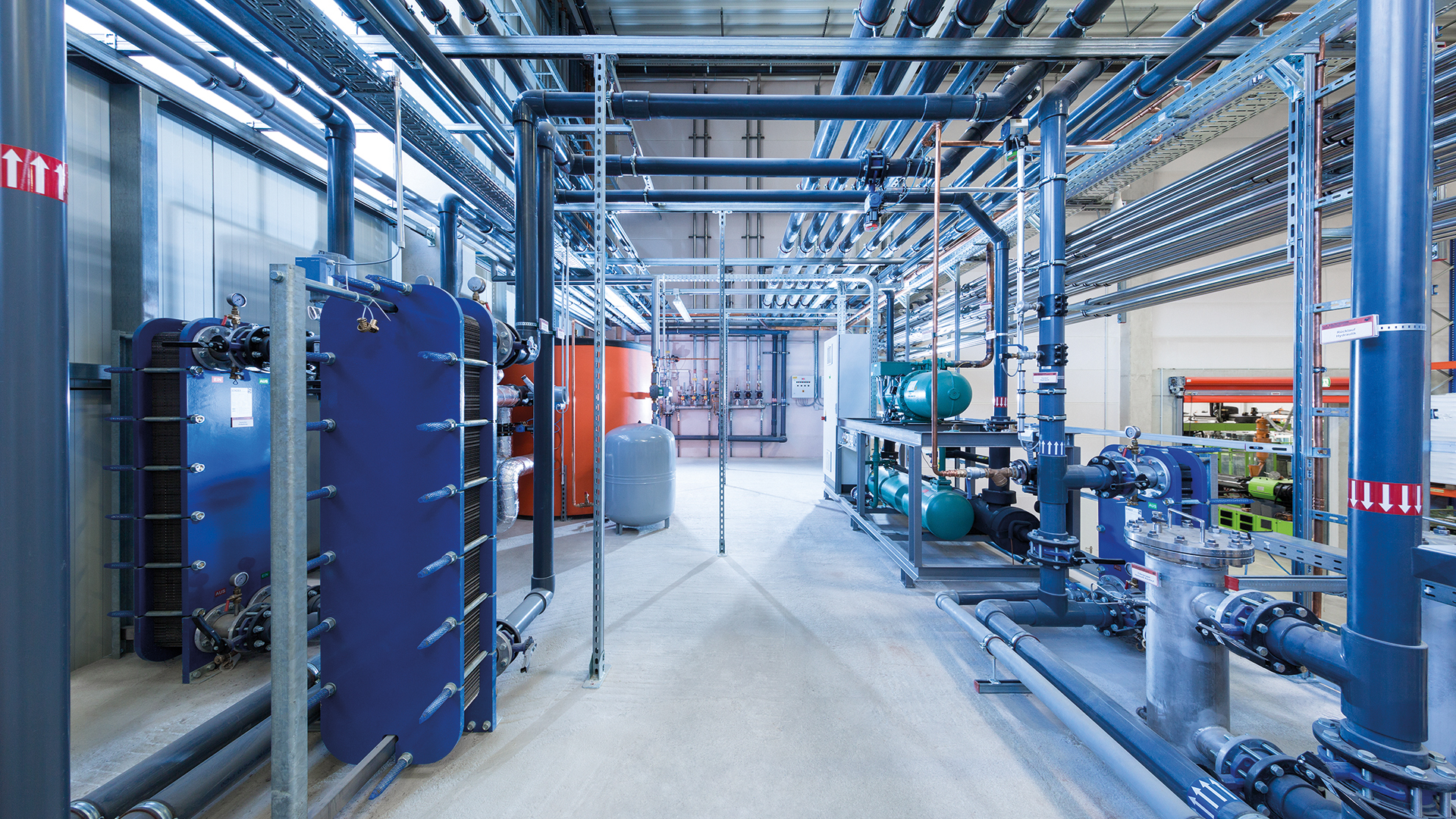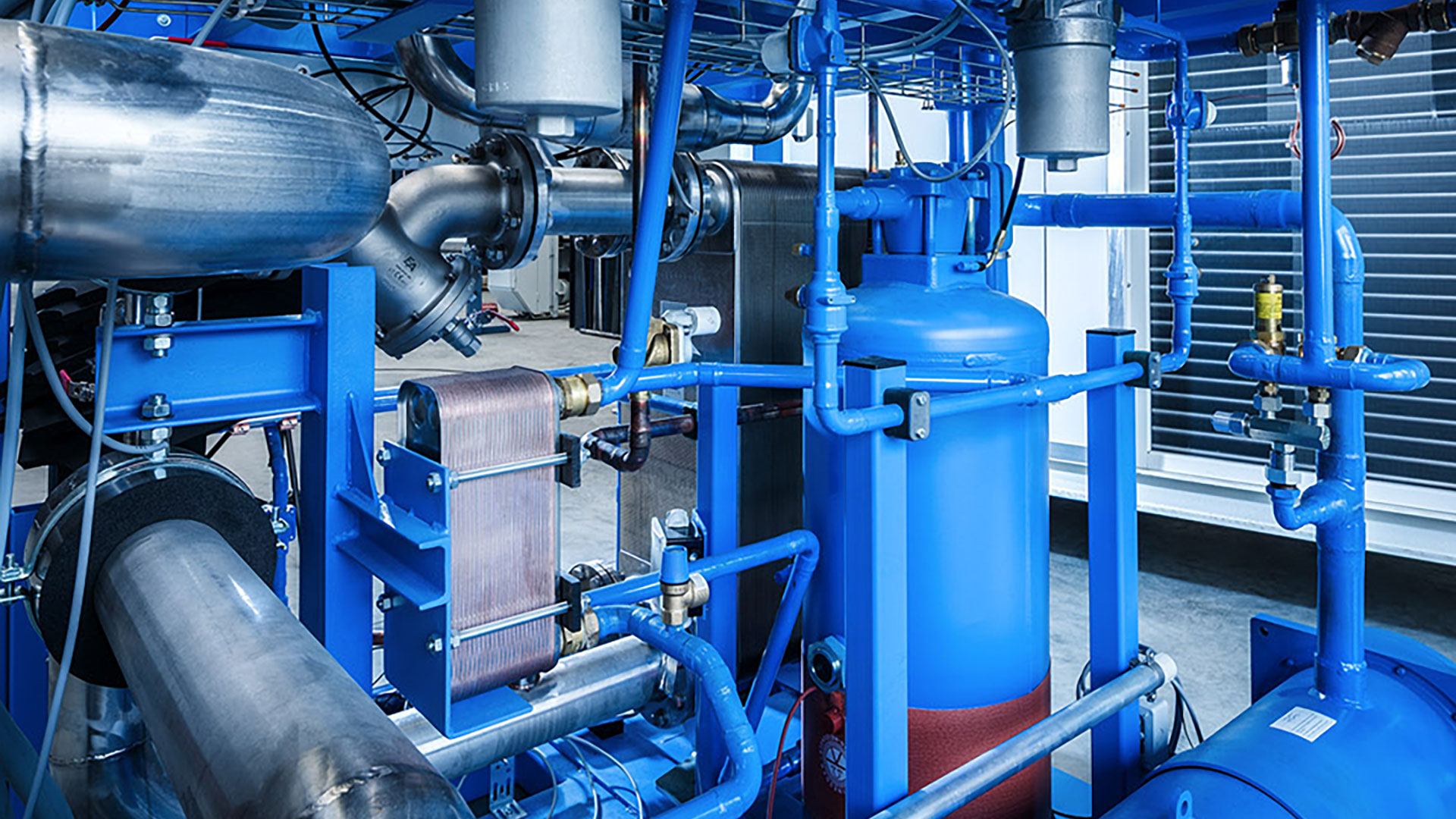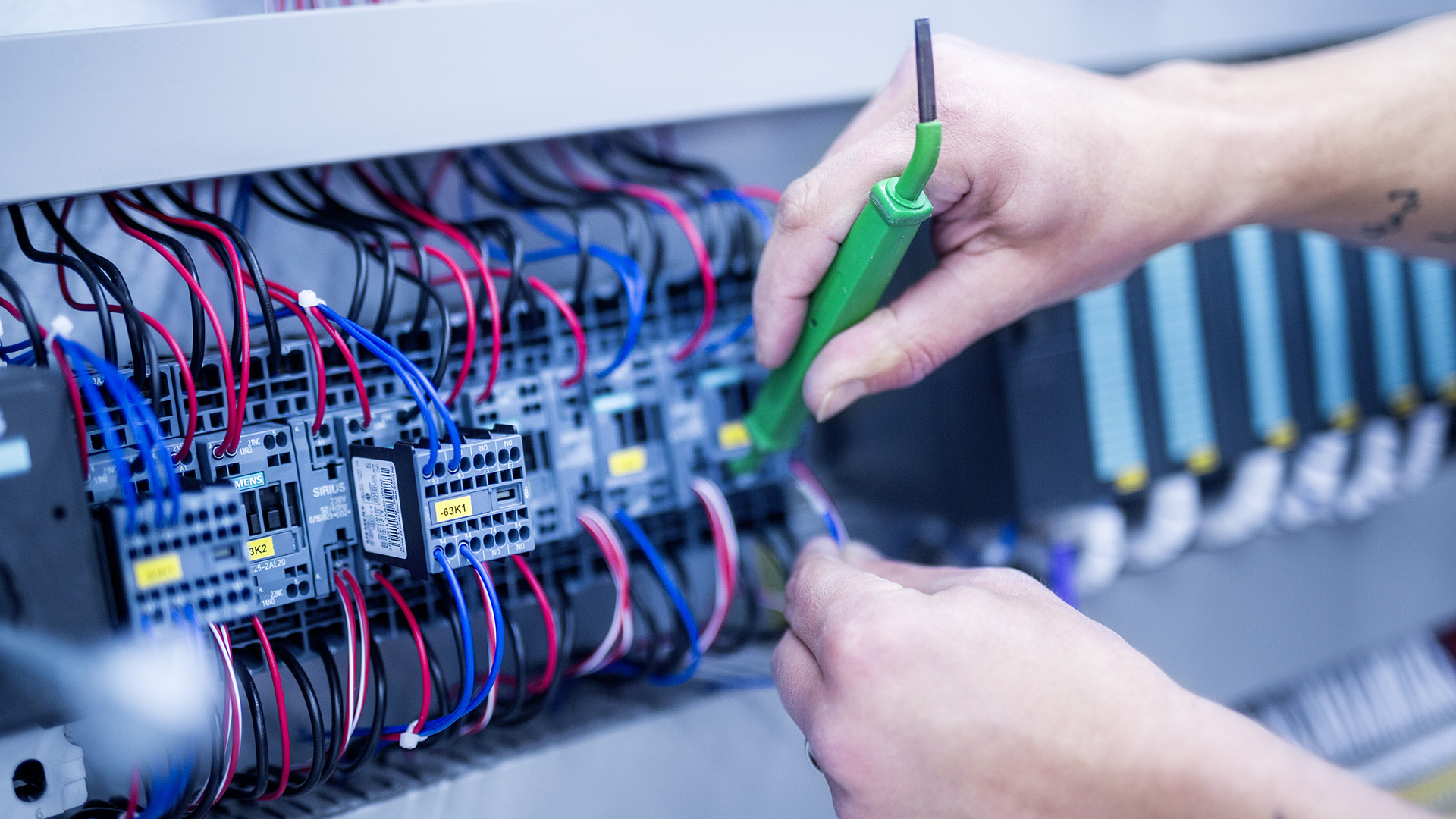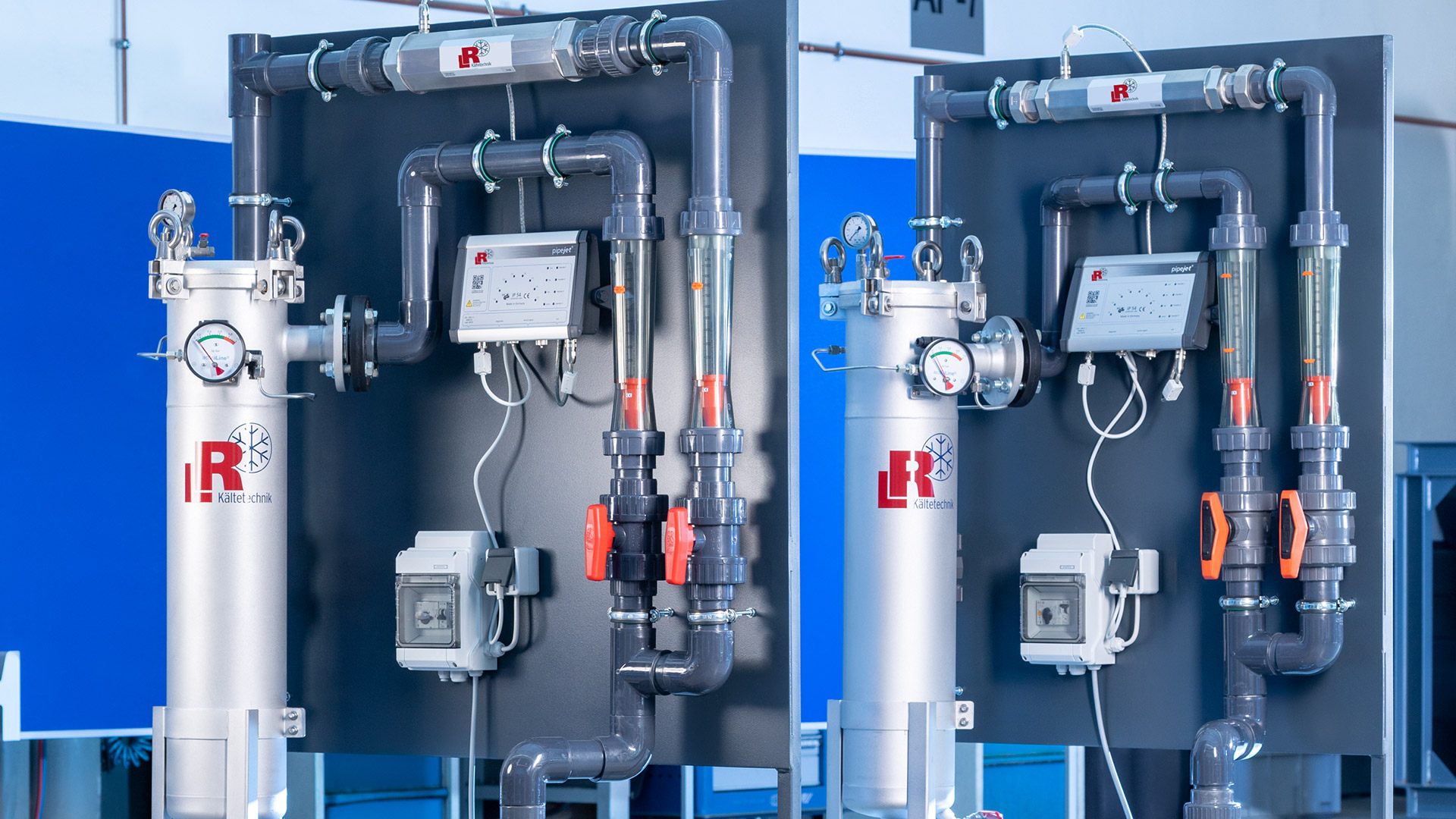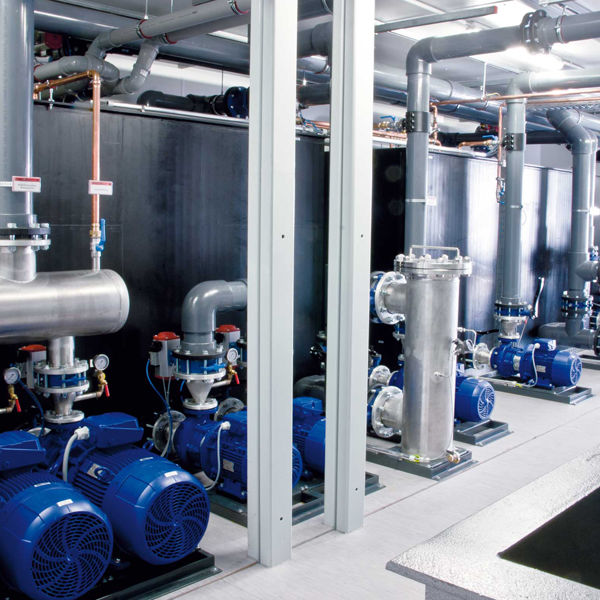Dutch plastics processor Moens Mouldings B.V. has commissioned a new refrigeration plant at its Beverwijk site (near Amsterdam).
L&R Kältetechnik GmbH & Co. KG, together with its Dutch partner Kurval-TRS B.V., designed and installed a system that not only allows annual energy cost savings of significantly more than €60,000, but also creates the conditions for a significant increase in productivity.
Economy or ecology – what takes priority?
When it comes to refrigeration technology in plastics processing, this question does not arise. Denn was ökologisch sinnvoll ist, verbessert auch die Ökonomie: Eine effiziente Kälteanlage spart nicht nur Energie und mindert den
CO2– Ausstoß des Betriebs. It also generates the desired temperature level with greater precision, thus accelerating the cooling process and providing for shorter cycle times. This increases productivity and reduces production costs.
Innovative packaging and disposables
The Dutch company Moens Mouldings B.V., which develops and manufactures high-quality injection-moulded parts at three locations with around 100 employees, is now benefiting from these advantages. Their product range includes disposable packaging with innovative closure technology, which can be opened and re-closed with one hand, as well as disposable cutlery and cups made from polystyrene. The group processes around 6,500 tonnes of material annually and, as a socially responsible company, strives to reduce the environmental impact of its production to a minimum.
At the Beverwijk site, there was a refrigeration system for the cooling of the plant that was around 15 years old. The hydraulics were cooled using groundwater. Since modern machines and tools place ever higher demands on temperature control, and as Moens also wanted to improve the efficiency of their refrigeration technology, those responsible decided to project plan a new refrigeration system. They commissioned Kurval-TRS B.V., which, as the Dutch sales and service partner of L&R Kältetechnik GmbH & Co. KG, has comprehensive know-how in refrigeration technology and also offers the plastics industry other components, such as conveyor systems, grinding plants and dryers. Thus, in addition to technical expertise, Kurval-TRS B.V. has industry expertise.
“Winter relief” saves energy costs
The L&R engineers designed an air-cooled chiller with two controllable Bitzer screw compressors and a total cooling capacity of 400 kW for tool cooling at an inlet temperature of 15 °C.
In summer, hydraulic cooling for the injection moulding machines is achieved via two self-draining free cooling units without glycol additives. During the transitional period, i.e. at temperatures below 15 °C, the hydraulics are cooled by a single free cooling unit. The second free cooling unit is then used for partial load relief of the chiller. At ambient temperatures below 10 °C, the second free cooling unit even takes over the complete cooling capacity of the chiller. This means that, at temperatures below 10 °C, the required cold is obtained entirely from the environment.
The economic benefit of this technology, which is also known as “winter relief”, can be quantified quite precisely, as L&R has shown in its bid. The expected savings through “winter relief” amount to over €50,000 per year, assuming 6,000 operating hours and an electricity price of €0.12/ kWh. In view of this sum, there was no doubt that Moens would chose this option, which is expected to have the shortest payback time.
Variable condensing temperature control
The existing chiller – like most refrigeration systems – was operated at a fixed condensing temperature, which is usually around 47 or 48 °C. However, this temperature is only required at very high outside temperatures of approx. 35 °C and higher. The system, therefore, always works based on the assumption of a worst case refrigeration scenario, which only actually occurs during a few days per year.
From an energy point of view, it makes more sense to adjust the condensing temperature according to the actual outside temperature. L&R Kältetechnik has created this possibility with the “VariKon” controller. It lowers the condensing temperature during operating time for most of the year and reduces the running time and power consumption of the compressors accordingly – with the result that energy consumption is reduced. Example: At an outdoor temperature of 10 °C, the system is operated with a condensation temperature of 23 °C and not with 47 °C.
Energy-saving measures that pay off
L&R also showed Moens this energy-saving measure, which is particularly efficient in combination with “winter relief”. Here, the calculated, annual energy cost savings amounted to over €60,000. This is offset by the investments in the free cooling units and in temperature-dependent control systems with the associated sensor technology. The refrigeration system must then also be equipped with electronic expansion valves and electronically speed-controlled fans. Nevertheless, the variable condensing temperature control pays for itself in a short period of time due to its high energy savings. In this manner, Moens saves on energy costs in the long term.
Speed-controlled pumps
As a further energy-saving measure, L&R proposed equipping one of three 22 kW operating pumps for the hydraulic and tool circuits with speed-controlled drives in each case. The pumps then adapt to the conditions in low-load or peak-load operation, while the other pumps with constant drive take over the base-load supply. This lowers the electrical power consumption of the pump motor by as much as 30%.
Container system can be installed quickly
The entire refrigeration system – including the control technology – was installed in two containers at the L&R plant in Sundern; the free cooling units are located on the container roof. This compact and installation-friendly design allows for quick and flexible installation on the company premises.
Significant increase in productivity as a “side effect”
To ensure the availability of the plant, Kurval-TRS B.V. offers a 24-hour service, which Moens has not yet had to make use of: The refrigeration system has been operating without a hitch since it was commissioned in May 2012 and is also achieving the calculated energy cost savings. Aus Sicht des Betreibers sind die erheblichen Senkungen der
CO2-Emissionen, die sich aus der hohen Energieeffizienz der Kältetechnik ergeben, ebenso erfreulich. And one effect is not even included in the operating cost calculation: The manufactured parts now cool down more quickly in the mould, and the hydraulic system can also be tempered “precisely”. This allows cycle times to be shortened and the productivity of the injection moulding machines to be increased, a benefit lasting over the entire service life of the refrigeration system.
Sector
Plastics & rubber industry
System solution
Split chillers
